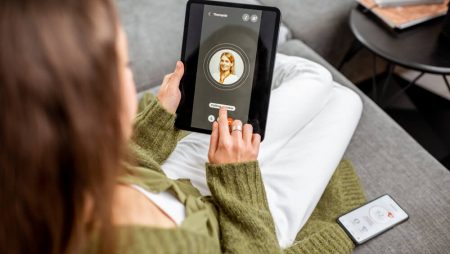



Get new exclusive access to healthcare business reports & breaking news




The delivery of healthcare has evolved continually to meet the needs of individuals and to take advantage of advances in technology. Recent changes in the context of the Covid pandemic have been no different, writes Dr. Peter Small, Chief Medical Officer of Hyfe
Ever since we began living in organized societies, we have attempted to find better ways to manage our health. As a result, we’ve often appointed a few members of our communities as healers or doctors. From early medicine men to the highly specialized doctors of today, our relationship with healthcare has gone through a lot of changes.
For instance, long ago, doctors would routinely make house calls. If a patient needed to be seen, he or she would request a visit from the town doctor and said physician would come straight to the house to run whatever diagnostics were necessary. This remained the standard model of patient care for centuries.
Over time, our medical capabilities improved. Similarly, our beliefs surrounding health as well as our societal structures shifted. These changes led to an almost complete elimination of house calls in favor of patients congregating at a doctor’s office or hospital. Moreover, it became obvious that maintaining a physician’s office in one central location made it much easier for said physician to treat more patients in a day. Also, it was unrealistic or impossible for doctors to make house calls for patients who required imaging such as X-rays or MRIs.
Centralized healthcare to promote provider convenience remained the norm for many years. Generally, this model of patient care was widely accepted by doctors and patients alike. That is, until the COVID-19 pandemic of 2020. This viral outbreak presented a unique challenge to our healthcare model.
Early guidance about the virus indicated that close contact should be avoided if at all possible. Further, calls for social distancing were becoming increasingly urgent as hospitals began to fill up with COVID-19 patients.
In an attempt to quell the spread of the virus and maintain social distancing, providers encouraged patients to stay home unless their symptoms required emergency intervention. Those patients who did not require urgent, in-person care were directed to use digital methods of diagnosis and treatment, such as telehealth and video conferences with physicians.
We are currently experiencing yet another societal shift whereby patients themselves are tracking their health data on smartphones and other personal devices. This increased access to information has led to improved public understanding of illness. The average consumer is now more aware of public health terms such as “incidence”, “mortality rates”, and “prevalence” than ever before. In addition, journalists from the lay press, such as the New York Times, are routinely writing pieces that would have been considered highly technical before the pandemic.
Digitized healthcare is slowly becoming the standard model of patient care. Patients have begun working with medical professionals to obtain a diagnosis, replacing the model of a passive patient in favor of more active patient participation in care.
Smartphone apps are revolutionizing healthcare in the digital age, bringing groundbreaking technology into the pockets of patients. These apps provide a way for patients to play a role in their healthcare by better tracking their own health. In a time when hospitals are so overwhelmed that patients are being treated in the hallways outside emergency rooms, digitized healthcare is not only beneficial, it’s essential.
The developers and medical professionals behind health-tracking apps have come to some important realizations in the past few years:
In the case of Hyfe, tracking cough enables patients to gain insight into their current health status. As a result, these patients and their doctors can obtain valuable information for use in the decision-making process.
Furthermore, the data obtained through the app will allow greater insight into public health metrics. Apps like this will one day be as ubiquitous as step counting apps, providing researchers with an incredible amount of individual data that can be anonymized and aggregated to help understand and respond to threats to the health of people and populations.
A future study utilizing the Hyfe app will examine the effect of the cough-tracking technology as it relates to the scalability of digitized healthcare as well as the early detection of disease. The logistics of performing such a study in the past, without the aid of an app, was almost unthinkable.
Now that most patients have a high-powered computing device in the palm of their hands, will the role of doctors become less important in healthcare? Absolutely not.
Doctors and public health officials are now more crucial than ever. With increased access to all information comes increased access to misinformation. There have been many unfortunate attempts over the past two years to capitalize on patients’ fears of COVID-19. Anyone can find scams and dubious treatment suggestions in all corners of the internet.
Evidence-based, high-quality information needs to be disseminated quickly and efficiently when new infectious threats or other public health issues come about. The best way to convey this information to the public is through readily available technology such as smartphones and apps that allow for easy communication.
Doctors and other health professionals are now our beacons of light, leading us out of this COVID-19 tunnel. Assistive technology, like smartphones and AI algorithms, will free health care providers of mundane tasks. These innovations will empower them to focus on the higher touch issues that technology can not replace. Moreover, in some cases, doctors and health professionals are the only sources who can dispel rumors and misunderstandings that circulate far and wide throughout the digital realm.
Digitized tools should be thought of as yet another way to diagnose and successfully treat more patients. Not as a means of replacing doctors with automated technology.

